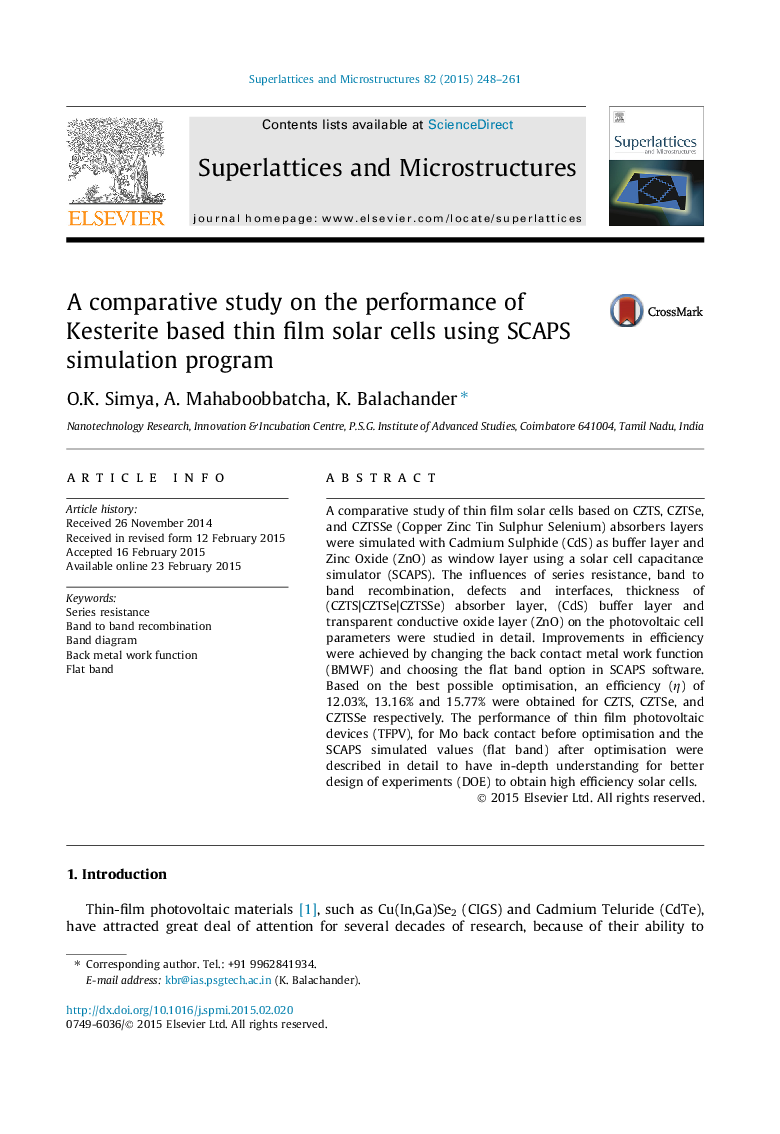| Article ID | Journal | Published Year | Pages | File Type |
|---|---|---|---|---|
| 1553210 | Superlattices and Microstructures | 2015 | 14 Pages |
•Comparison of CZTS, CZTSe and CZTSSe thin film solar cells.•Band diagram of CZTS, CZTSe and CZTSSe.•Effect of series resistance on efficiency, effect of thickness on absorber, buffer and transparent conductive oxide layers.•Band to band recombination, interfaces and defects.•Comparison of flat band and Mo back contact.
A comparative study of thin film solar cells based on CZTS, CZTSe, and CZTSSe (Copper Zinc Tin Sulphur Selenium) absorbers layers were simulated with Cadmium Sulphide (CdS) as buffer layer and Zinc Oxide (ZnO) as window layer using a solar cell capacitance simulator (SCAPS). The influences of series resistance, band to band recombination, defects and interfaces, thickness of (CZTS|CZTSe|CZTSSe) absorber layer, (CdS) buffer layer and transparent conductive oxide layer (ZnO) on the photovoltaic cell parameters were studied in detail. Improvements in efficiency were achieved by changing the back contact metal work function (BMWF) and choosing the flat band option in SCAPS software. Based on the best possible optimisation, an efficiency (η) of 12.03%, 13.16% and 15.77% were obtained for CZTS, CZTSe, and CZTSSe respectively. The performance of thin film photovoltaic devices (TFPV), for Mo back contact before optimisation and the SCAPS simulated values (flat band) after optimisation were described in detail to have in-depth understanding for better design of experiments (DOE) to obtain high efficiency solar cells.
